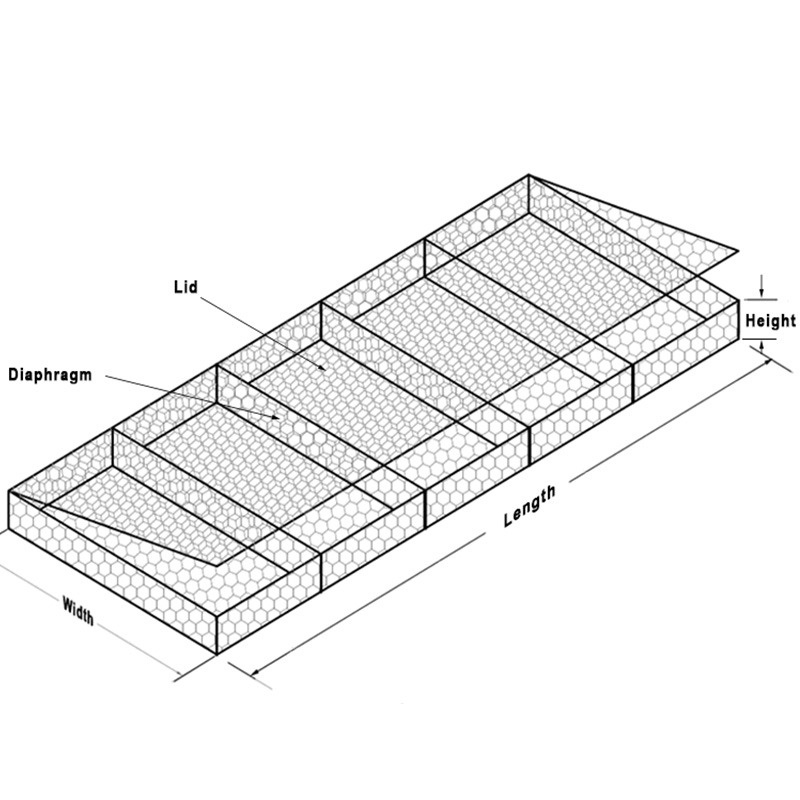Septemba . 18, 2024 21:04 Back to list
residential gabion retaining wall
Residential Gabion Retaining Walls A Durable and Aesthetic Solution
In the realm of landscaping and civil engineering, gabion retaining walls have emerged as a popular choice for residential properties. These structures, made of steel mesh or wire baskets filled with rocks, provide not only functional benefits but also aesthetic appeal. As homeowners seek effective strategies for managing soil erosion, slope stabilization, and garden design, gabion walls present a versatile solution.
Functionality and Structural Benefits
Primarily, gabion retaining walls serve as a practical solution for preventing soil erosion and controlling water runoff. Their design allows for the dissipation of hydrostatic pressure, which can build up behind traditional retaining walls. The open nature of gabions allows water to seep through while still holding back the soil, reducing the risk of failure that is often associated with solid structures. This drainage capability helps maintain the integrity of the wall over time and reduces maintenance costs.
Moreover, gabion walls are capable of supporting significant weight, making them ideal for steeply graded landscapes or areas prone to landslides. Their mass and the angular arrangement of the filling stones create stability, allowing them to hold back considerable amounts of earth. This structural advantage makes them a favored option in both residential landscaping and civil engineering projects.
Aesthetics and Customization
residential gabion retaining wall

Beyond their functional applications, gabion retaining walls offer considerable aesthetic benefits. Homeowners can choose from a variety of stone materials, colors, and sizes to create a look that complements the overall landscape. The rustic appearance of natural stone-filled gabions can blend seamlessly with the environment, enhancing the beauty of gardens, patios, and pathways.
Furthermore, gabion walls can be designed in various shapes and sizes, allowing homeowners to create unique landscaping features. Whether forming tiered levels, seating areas, or integrated planting beds, these retaining walls can enhance the visual interest of a residential property. The versatility in design also means that gabion walls can be customized to fit different architectural styles, from modern to traditional.
Sustainability and Environmental Impact
The use of local stone and natural materials in gabion walls makes them an environmentally friendly option in construction. Unlike concrete walls, which often require significant energy inputs for production, gabions minimize environmental impact by utilizing materials that are readily available and require minimal processing. Additionally, their permeability allows for water management in landscape design, promoting sustainable practices in residential gardening.
Conclusion
In summary, residential gabion retaining walls stand out as a durable, aesthetically pleasing, and environmentally friendly option for homeowners looking to enhance their landscapes. By effectively managing soil erosion and water runoff while providing a customizable design element, gabion walls prove to be a practical solution for various landscaping challenges. As more homeowners embrace sustainable living and thoughtful landscape design, the popularity of gabion retaining walls is likely to continue rising, offering benefits that extend beyond mere functionality.
-
The Role of Galvanized Gabion Mesh in Riverbank Protection
NewsJun.26,2025
-
The Role of Gabion Basket Raised Bed in Sustainable Gardening
NewsJun.26,2025
-
Quality Assurance of Wire Mesh Gabion Baskets
NewsJun.26,2025
-
Installation Guide for Welded Gabion Box
NewsJun.26,2025
-
How to Choose the Right Gabion Box
NewsJun.26,2025
-
Different Types of Gabion Wire Mesh
NewsJun.26,2025
-
Why PVC Coated Gabion Mattress Is the Best Solution for Long-Term Erosion Control
NewsMay.23,2025






